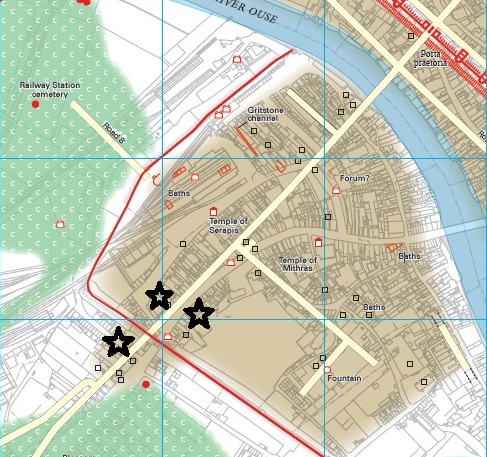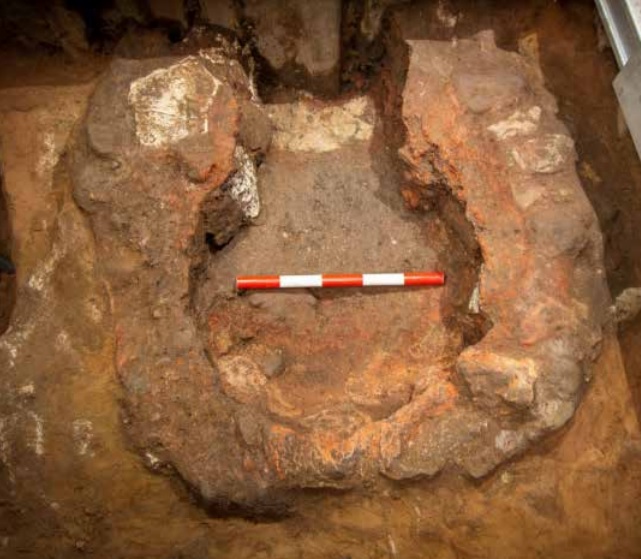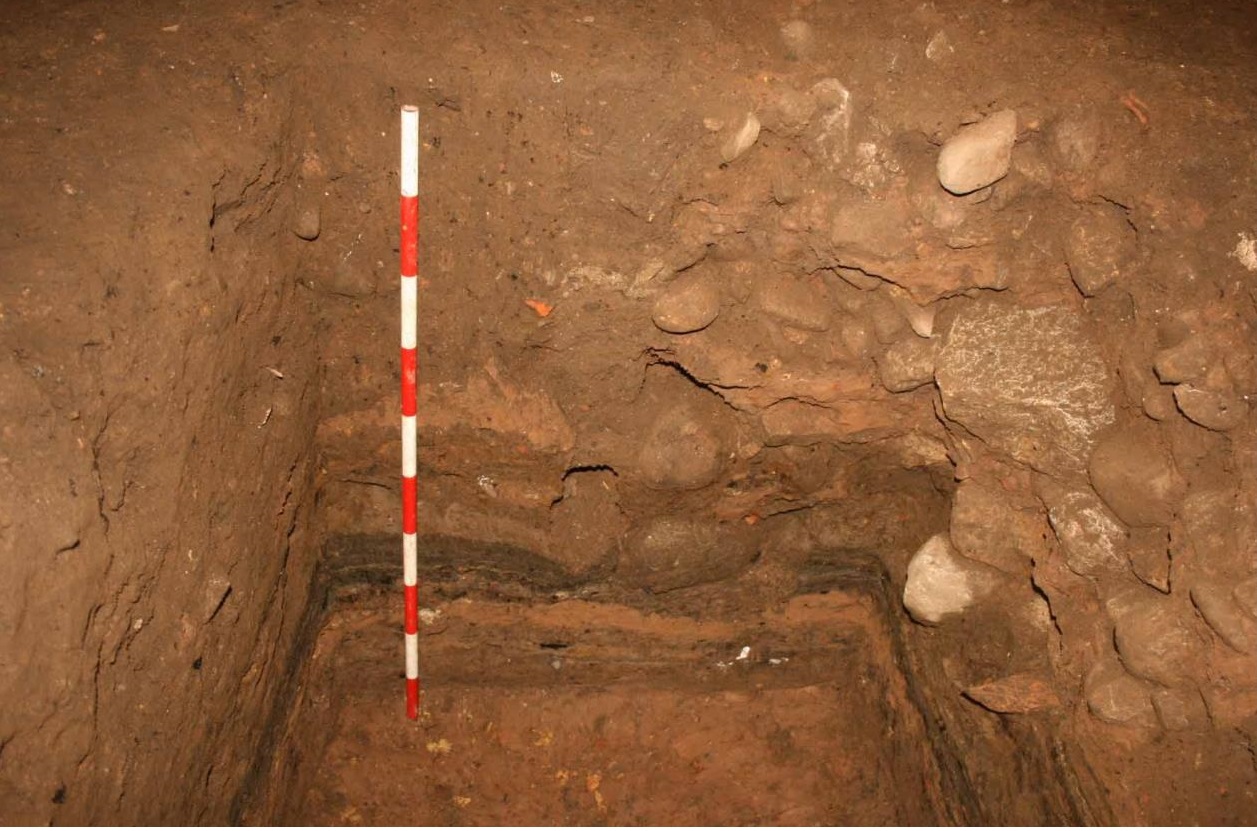Guildhall
- Posted in:
- Guildhall
- Roman
- Friary
- Excavation
Between 2012 and 2021 extensive archaeological investigation has taken place at the Guildhall prior to and during the refurbishment of the main hall, and the construction of south and north annex.
The Guildhall complex is situated on the north-east side of the River Ouse. It is located immediately outside of the Roman fortress, just up-steam from the Roman river crossing and was the site of a medieval Augustian Friary.
In 2012, as part of the York 800 celebrations, York Archaeological Trust opened three trenches as part of a community excavation; inside and immediately outside the Guildhall building and within the Mansion House cellar. They examined the footings of the Guildhall on top of Common Hall Lane (an underground passageway leading to the river), looked to see if archaeology survived beneath the Mansion House Cellar and characterised the archaeology beneath the ground surface at the front of the hall. These trenches could only access the upper metre or so of archaeology on the site.
Further investigations took place in 2014 at the Hutments site, adjacent to the Guildhall by AOC Archaeology. The Hutments name derived from a temporary wooden building that stood on the site from the 1930s until 2014. This initial investigation, partially carried out as a community project, was an attempt to characterise and identify the archaeological make-up of the upper 1.5m in this part of the site.
However, it was during the construction phase of the south range (York Archaeological Trust 2019) and north annex that the majority of archaeological investigation took place and where the most important findings were made. Between 2018-2020 several phases of archaeological monitoring and excavation were undertaken by York Archaeological Trust. The North Annex works are listed under EYO8004. There are several reports available on the HER.
The most recent analysis report brings all of this investigation together and provides the most detailed results of the works. The findings will be published on Internet Archaeology and will also be distilled into an easy to digest version for the layperson by the end of the year.



